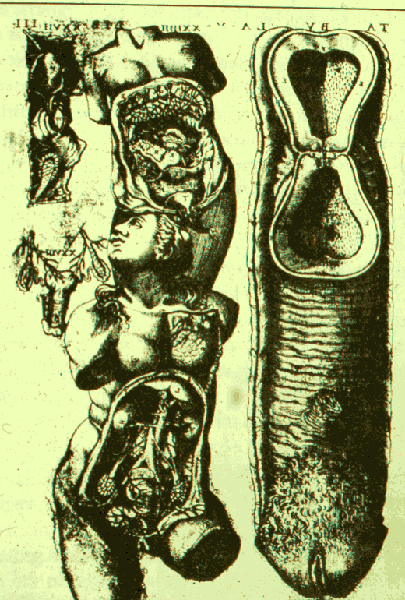Butler’s theory of the active performance of gender elicits questions related to my own research and teaching. I teach a course on medieval medicine and disease, and it seems that my students are perennially fascinated by the nuances of gender and embodiment present in medieval theories of sex difference. At one level, within the broadest framework of Aristotelian categories, all bodies were male. Women’s bodies were imperfect versions of male bodies, constitutionally too cold and damp to properly digest food (which then became transmuted into the humors via the stomach and liver) or extrude their genitals. Male bodies, characterized by a hot and dry complexion, had enough innate heat to digest food, and to extrude genitalia. Their innate heat meant that they could also get rid of noxious vapors that would otherwise build up within their bodies, causing illness. Body hair and regular secretions (mucous and semen, for example) were just two ways that male bodies naturally and perfectly purged themselves of toxins. Female bodies, on the other hand, had fewer options for releasing humoral excesses or putrid substances. They have less body hair, and only menstruate monthly (at best, keeping in mind that many women bore numerous children during their childbearing years, reducing their overall menstruation significantly).
Yet within this broad framework, a number of different theories of gender and/or sex arose and were debated to explain phenomena that did not fit into this broad Aristotelian framework. Many writers realized that complexion and sex difference existed along a spectrum that included viragos and effeminate men; that is, bodies that were physiologically, anatomically, and constitutionally “imperfect,” that did not conform to a strict Aristotelian or Galenic binary, and that resulted in gender that was performed wrongly, or at least in contradiction to established norms.
Several scholars of medieval and early modern bodies and sexuality have been influenced by Butler’s ideas, as well as Foucault’s (to whom Butler acknowledges her debt). The “one-sex body”is one such idea that has been examined in recent scholarship. This takes the Aristotelian idea to its extreme, that women’s bodies are imperfect inversions of male bodies.
However, it’s also been demonstrated that this idea, which did certainly exist in the early modern period, was limited to a particular time (several decades in the 16th and 17th centuries) and register (medical textbooks). While it’s certainly true that medieval gender was performed and constituted along specific norms, it’s also true that medieval notions of sex—and gender performance—were messier, more complicated, and less teleological than we might think.
Butler’s notion of the performance of gender was, as she eloquently states in the introduction to Gender Trouble, arose out of her own participation in different social movements and communities in which she lived for many years. “I went to many meetings, bars, and marches and saw many kinds of genders, understood myself to be at the crossroads of some of them, and encountered sexuality at several of its cultural edges.” (95) I wonder if medieval notions of gender would complicate or change her own ideas, or if they would confirm them.
